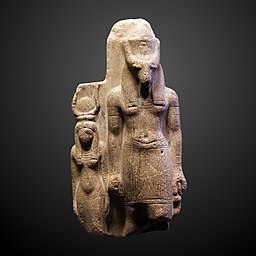Perception of the god Seth in Ancient Egyptian and Modern Cultures
Date: Saturday 18th November 2023 at 2pm
 By Dr Ian Taylor
By Dr Ian Taylor
Cost: Free for Members and £4 Visitors
Venue: Oakwood Centre Woodley In-Person only 2.00 pm No advance booking required
Although Seth is one of the oldest deities in the Egytian religion his perception in the western world is one of a noisy, disruptive and dangerous deity, the ‘Enfant Terrible’ of the Egyptian pantheon. This perception is based one single incident, the act of regicide/ fratricide against his elder brother Osiris, the king of Egypt, which brought death into the world of the gods. This view is based on a late Egyptian version of the myth of Osiris and Seth as recorded by the Greek philosopher Plutarch writing in the 2nd century AD. What Plutarch presented was his interpretation of the Egyptian perception of Seth derived from some 2,000 years of evolution of the cult of Osiris and interpreted for a Greek and Roman audience to appeal to their ideals of morality and perceptions of good and evil.
What is not observed or mentioned was that there was much more to the character of Seth than this single act of sibling violence. Plutarch fails to mention is that that origin of Seth predated the rise of the Osiris cult and rather than being the rival and enemy of Horus was paired with him. In addition, no mention is made of the role of Seth in protecting the sun god on his solar barque from the attack of the demon Apep as it journeyed nightly through the underworld.
The western perception has been influenced by Plutarch’s negative portrayal of Seth and all Seth’s positive character attributes are ignored. This is reflected in how he is portrayed in the media of the 20th and 21st centuries. Both in film and literature Seth is portrayed as an evil villain, somebody to be defeated by the powers of good.
Biography
Ian, whose background was as a historic building conservation architect, has been interested in ancient Egypt, especially the god Seth for many years. He obtained an MA in Egyptian Archaeology from the Institute of Archaeology University College London in 2008 and a PhD from the University of Birmingham in 2017, the subject of his thesis being on the deconstruction of the iconography of Seth. He has given presentations at several conferences including the British Egyptology Congress and at local ancient Egypt societies He is a member of the Essex Egyptology Group.
|
 By Dr Ian Taylor
By Dr Ian Taylor